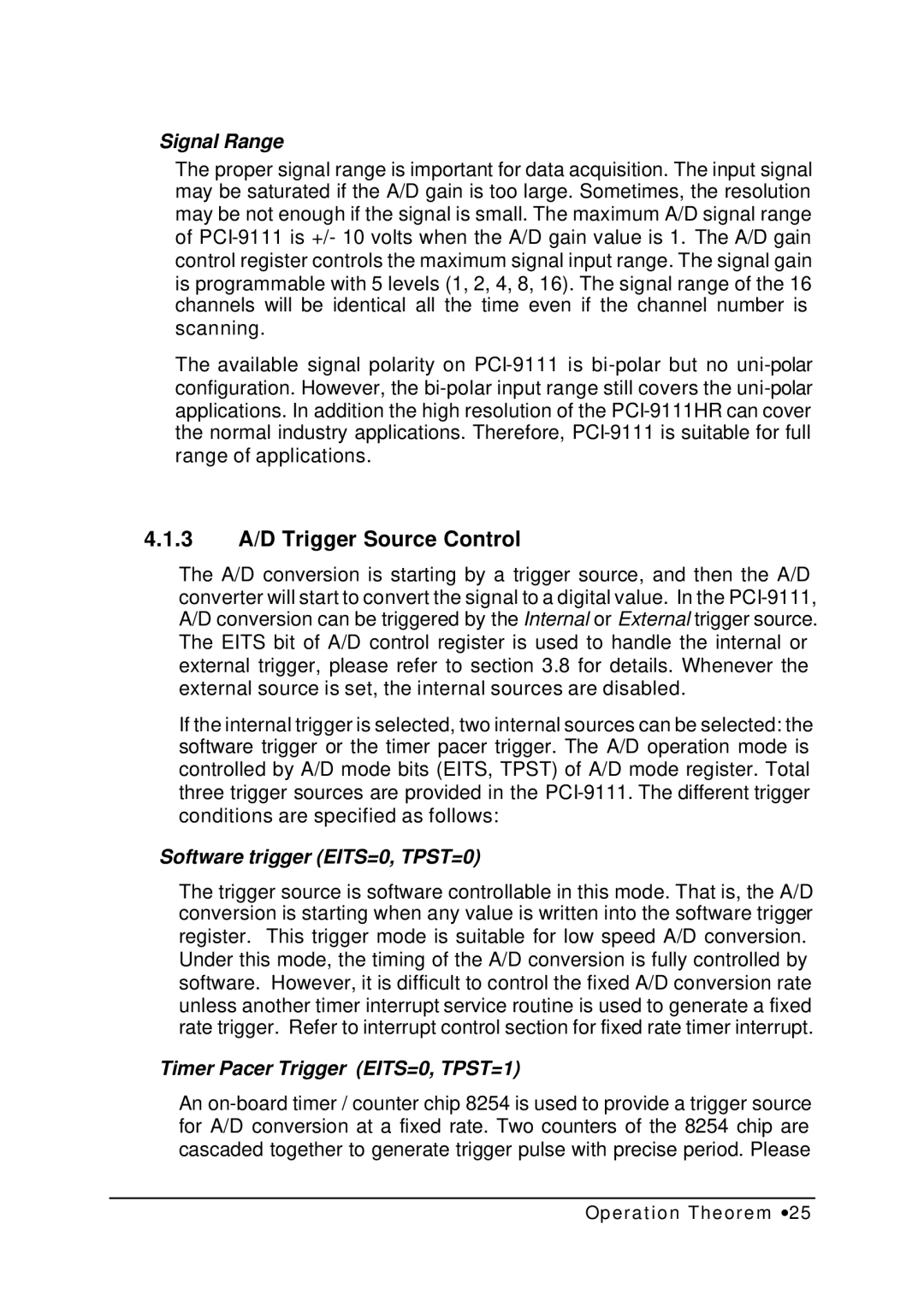Signal Range
The proper signal range is important for data acquisition. The input signal may be saturated if the A/D gain is too large. Sometimes, the resolution may be not enough if the signal is small. The maximum A/D signal range of
The available signal polarity on
4.1.3A/D Trigger Source Control
The A/D conversion is starting by a trigger source, and then the A/D converter will start to convert the signal to a digital value. In the
If the internal trigger is selected, two internal sources can be selected: the software trigger or the timer pacer trigger. The A/D operation mode is controlled by A/D mode bits (EITS, TPST) of A/D mode register. Total three trigger sources are provided in the
Software trigger (EITS=0, TPST=0)
The trigger source is software controllable in this mode. That is, the A/D conversion is starting when any value is written into the software trigger register. This trigger mode is suitable for low speed A/D conversion. Under this mode, the timing of the A/D conversion is fully controlled by software. However, it is difficult to control the fixed A/D conversion rate unless another timer interrupt service routine is used to generate a fixed rate trigger. Refer to interrupt control section for fixed rate timer interrupt.
Timer Pacer Trigger (EITS=0, TPST=1)
An
Operation Theorem ∙25
